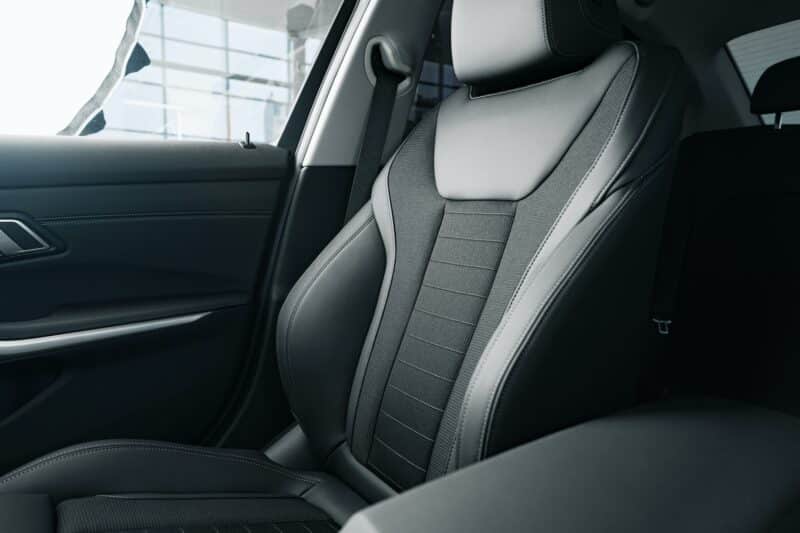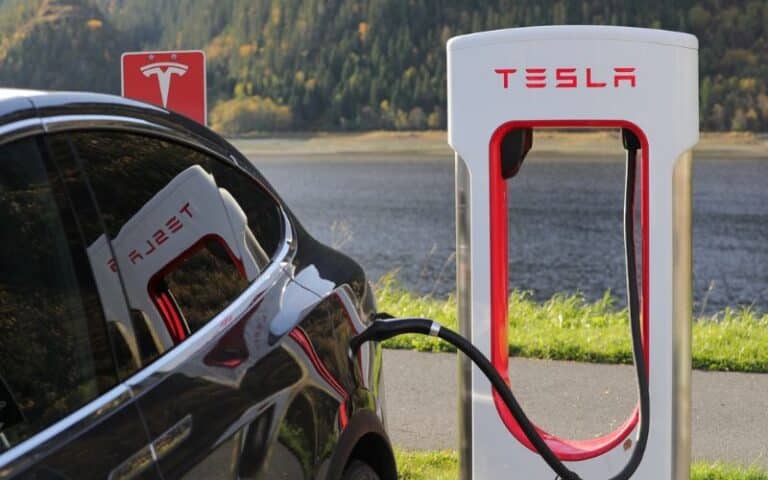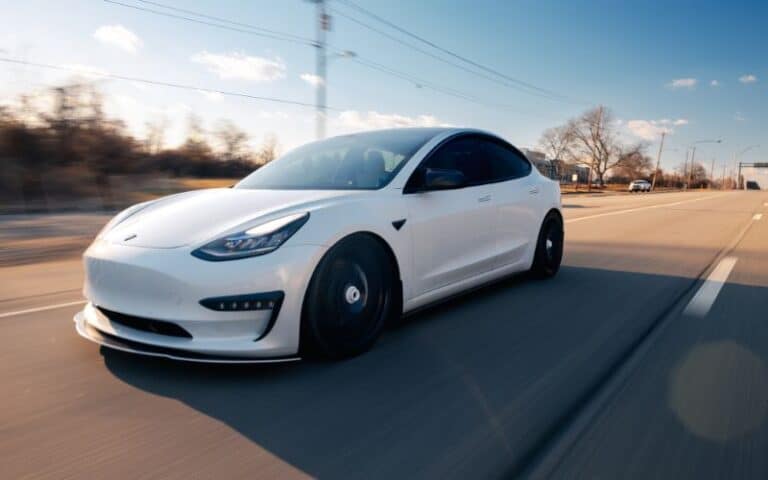Are Tesla Model 3 Seats Leather? (Must Know This)
Tesla is one of the world’s leading electric vehicle manufacturers, a powerhouse for EV innovation and premium interior and exterior design.
If you are a potential buyer, you might wonder what material an eco-friendly manufacturer like Tesla uses for their Model 3 seats.
The Tesla Model 3 uses vegan(synthetic) leather for their Model 3 seats and other interior parts. You can also purchase a Model 3 from Tesla that uses animal leather instead of a synthetic substitute, but you have to make a pre-order, which will cost you a few hundred dollars more.
In this article, I will list and explain the material Tesla Model 3 seat use, compare their advantages and disadvantages, and show steps to clean and maintain them.
Does the Tesla Model 3 have Leather Seats?

Yes, the Tesla Model 3 has leather seats. Pre-2019 Tesla Model 3s used a combination of synthetic and animal leather for their seats and steering wheel.
Leather is a vital resource for interior designs, and the look and feel of the leather in a car can influence a customer’s choice.
Standard versions of the Tesla Model 3 come with synthetic leather interiors and seats, but you can request a real leather interior.
Tesla seats require proper maintenance to remain in good condition. To save money, you must protect your Model 3 leather interior from getting damaged.
Here are some methods to protect your Model 3 leather interior from getting damaged.
#1. Avoid Harsh Leather Cleaners
Harsh and corrosive cleaners are the biggest culprits that damage leather interiors and seats.
Some leather cleaners use alcohol as a solvent, and alcohol is very harmful to leather because it dissolves the protective coat on the leather surface and flash dries the leather.
Check the chemical content of any leather cleaner for alcohol before cleaning your Model 3 seat and interior.
#2. Wipe Off Oils and Cosmetics Stains Immediately
Besides harsh leather cleaners, body oils and cosmetics are among the main compounds that destroy leather interiors.
Cosmetics like relaxers and conditioners erode the outer layer of leather, causing discoloration and cracking.
Corrosion caused by cosmetics is apparent when your Tesla headrest and steering wheel are getting damaged faster than any other part of the interior.
You can stop using corrosive cosmetics to reduce corrosion damage or wipe the seat after every drive to reduce exposure.
#3. Avoid Temperature Fluctuations
If you stay in climates with hot summers and cold winters, your leather interior is prone to damage due to fluctuating temperatures.
Exposure to UV radiation from the sun significantly shortens the lifespan of leather interiors, so you should do your best to keep your Tesla away from the sun.
Leather expands slightly when heated and contracts when cooled; this expansion and contraction can cause micro-cracks in the leather structure that expands into huge cracks.
It would be best to park your Tesla safely away from exposure to the elements to lengthen your interior‘s lifespan.
Try packing in a garage if you have one and in a shade if you don’t.
Although vegan leather is a cheaper and more eco-friendly alternative to animal leather, it has some disadvantages that have prevented worldwide adaptation.
Here is a comparison between animal-based leather and synthetic leather.
| Animal Leather | Synthetic Leather |
|---|---|
| They are very durable and sturdy. | They have average durability and strength. |
| Manufacturing produces lots of CO². | Produces nearly 7 times less CO². |
| It resists conditioners, lotion, and corrosive oils well. | Corrodes easily after contact with cosmetics and body oils. |
| It can withstand temperature fluctuations without cracking and peeling. | Prone to cracking after temperature fluctuations. |
From the above, you can see that the current disadvantages of vegan leather outweigh the gains and prevents mass adoption by vehicle manufacturers.
Does the White Interior in Tesla Model 3 Get Dirty?
Yes, the white interior of the Tesla Model 3 gets dirty quicker than darker interiors because its color makes dirt more pronounced.
Ever since the push for more eco-friendly interiors, Tesla has used vegan leather for all the interiors of their vehicles.
Vegan leather has up to 700% less environmental impact, and its production does not harm animals.
Sadly interiors made with vegan leather are less durable than animal leather, and stains and discoloration are more visible.
Since white interiors stain easily, you must clean them properly.
How to Clean a White Tesla Model 3 Interior?
You can clean the interior of your Model 3 with household items, but you won’t be able to clean it properly without some special tools.
These are the materials you need to clean your Tesla interior.
- Microfiber washcloth.
- Wash soap.
- Vacuum cleaner.
- Leather cleaner spray bottle.
- Bottle of conditioner(optional).
Step 1: Vacuuming
It would be best to vacuum your Model 3’s interior before cleaning because dust, sand, and other abrasive particles can wear the coat of the leather while cleaning.
Synthetic or vegan leather isn’t as durable as real leather, so you must be extra careful while cleaning it.
Remove all the driver and passenger floor mats before you vacuum because they can hide a lot of dirt. Ensure you vacuum all the joints of the seats and interior.
If you don’t have a vacuum cleaner, use a handheld blower to blow abrasive particles away.
Step 2: Cleaning
After vacuuming its surfaces and joints, you can start cleaning the Model 3’s interior.
Here are the steps to follow.
- Mix a good quantity of liquid soap and water in a bowl or bucket.
- Open all the Model 3 doors to let air circulate.
- Soak the microfiber towel in the water and squeeze.
- Use light circular movement while cleaning to avoid damaging the leather surface.
- Clean the rear seats first and gradually move to the front.
- Rinse the towel when it’s getting dry or dirty.
- Use the leather cleaner to spray surfaces with stubborn stains, and rub with the towel.
Step 3: Finishing
The finishing is the final step done after every interior cleaning and detailing. Finishing aims to give the interior of the Model 3 a nice and protective look after cleaning.
After washing, wipe the seats with another dry microfiber towel and allow the seats to air dry.
Many cleaning agents have compounds that give leather surfaces a clean finish, so it is up to you to choose if you want to apply a conditioner.
You can spray, brush, or apply conditioner with disposable wipes. It is up to you to choose the right conditioner for your animal or vegan leather.
Can I use Leather Cleaner on my Tesla Model 3 Seats?
Yes, you can use leather cleaners on your Tesla Model 3, although the cleaner you use will vary based on whether your interior uses animal or vegan leather.
Auto manufacturers have been using animal leather for the interiors of their cars for over a hundred years because of its durability and beauty.
Tesla also uses leather for their vehicle interior and steering, but as of 2019, they have completely phased out animal leather and switched to synthetic leather.
You can clean light stains from leather with household dish soap, but heavier stains might require a leather cleaner.
Leather cleaners have different compositions; some are made from natural compounds like vinegar, while others are from synthetic chemicals.
You can use leather cleaners on your Model 3 seats, but it would be best if you use synthetic cleaners for animal leather and natural cleaners for vegan leather.
Vegan leather is more delicate and less durable than animal leather but has less environmental impact.
Use cleaners that don’t contain harsh detergents that can damage and discolor the surface of the synthetic leather.
The best cleaners for vegan leather are all-in-one cleaners that clean and condition the surface of the leather.
You can purchase leather cleaners and conditioners like the Guardsman Renew & Protect or the Chemical Guys HOL3 kit if you want one with complete detailing equipment.






